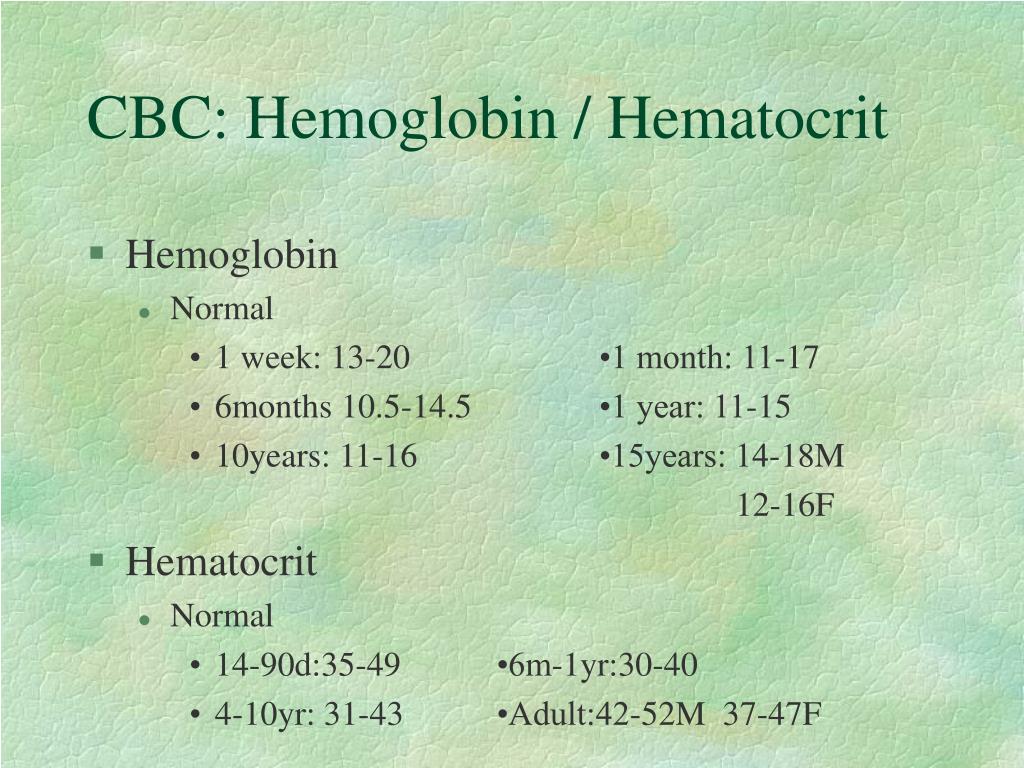
- #CRITICAL LOW HEMATOCRIT AND HEMOGLOBIN LEVELS MANUAL#
- #CRITICAL LOW HEMATOCRIT AND HEMOGLOBIN LEVELS PROFESSIONAL#
Electrolyte panels might change with intervenous infusions, medications, and diet.


#CRITICAL LOW HEMATOCRIT AND HEMOGLOBIN LEVELS MANUAL#
At Henry Ford Hospital, a lab values manual was created in 1996 and has been revised many times over the years, including this year. They're also based on expert physician recommendations, in some cases where literature isn't as deep. Today, the abnormal values and the appropriateness for rehab intervention that we're going to discuss are based on evidence-based literature.
#CRITICAL LOW HEMATOCRIT AND HEMOGLOBIN LEVELS PROFESSIONAL#
It is always important to have discussions with your physicians for professional exchange, no matter what we're learning today. Individual physicians may have guidelines that are based on their own clinical research or preference.

We have to understand how they interact with our bodies and what the physiologic response is. In a 1972 article, Lundberg defined a critical value as "a physiological state at such variance with normal as to be life threatening unless something is done promptly, and for which some corrective action can be taken." As critical values might evolve quickly in the acute care setting, it is important for us to frequently reassess to be sure that our patients are safe and we're providing effective patient management.Īnother article by Amy Pawlik in 2013 deals with how patients with acute illness "require timely and accurate assessment and modification of activity by the intervening PT (or OT / assistant), and the titration of activity in response to changes in the physiological status." This is key to our lab values and understanding lab values and vital signs. For many tests, the normal ranges will vary depending on age, gender, race, or other factors. The normal values at each institution are typically determined based on 95% of healthy people in a certain group. In acute care or subacute care, the most common blood tests that we see include complete blood count (CBC), and differential and basic metabolic profile or routine chemistry. They evaluate the kidneys, liver, thyroid, heart, and other aspects of health. Laboratory diagnostic tests are one factor in determining the overall health of our patients. We're going to spend time introducing a few basic reasons why we look at lab values, go over some clinical reasoning, and then we'll dive deeper into each of the vital signs and lab values.

Thank you for joining our webinar today on the role of lab values in clinical decision making and patient safety for the acutely ill patient.


 0 kommentar(er)
0 kommentar(er)
